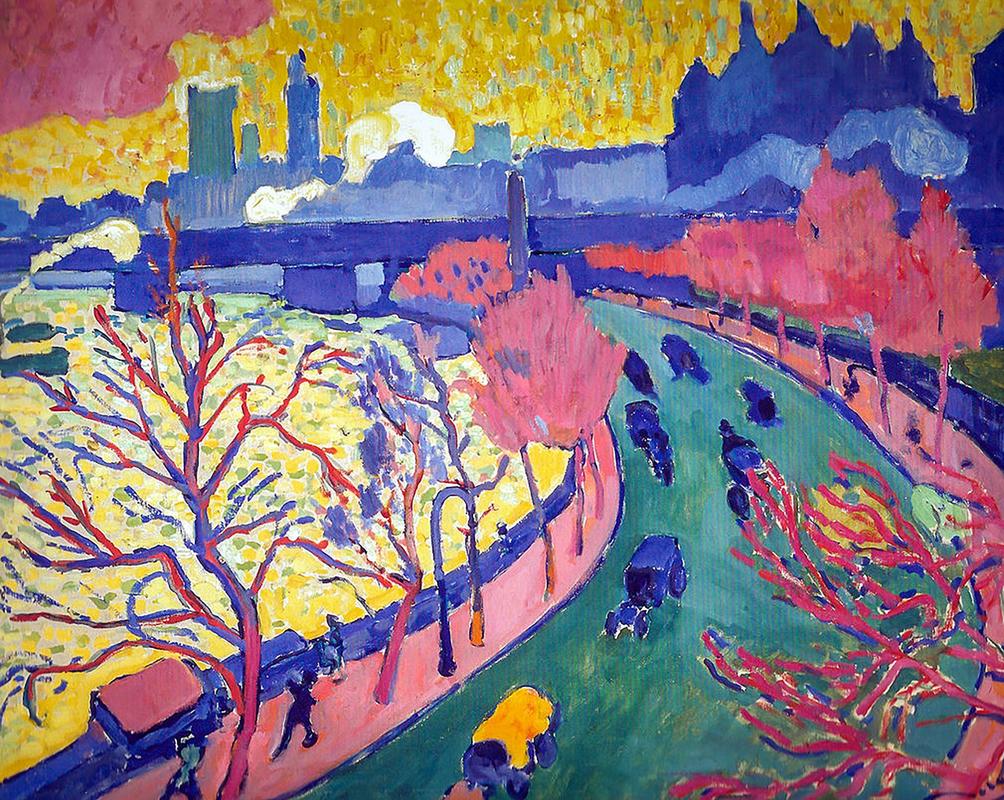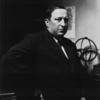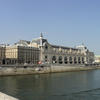Derain's eccentric agent, the wheeler and dealer Ambroise Vollard, co-signed on the artist's pre-WWI field trips to London, encouraging him to follow in the footsteps of Claude Monet, an effort which birthed Charing Cross Bridge.
In three assignments for Vollard, Derain went all-out and managed to produce thirty different paintings, some of which he sketched in London and completed back home. Monet had walked the same streets, producing paintings that showed the city in his own dreamy, intuitive way. Derain wasn't interested in the wispy, ambient darkness of the place, like John Atkinson Grimshaw or J.M.W. Turner—he painted action and movement.
Fresh out of military service, Derain was, he said, "on fire, totally on fire." At the third Salon d'Automne, the previous year, 1,625 works by 397 artists, including nine Derains and works by Vlaminck, Jawlensky, and Kandinsky, had derailed people's ideas about how art should look. President of the Republic Emile Loubet declined the ceremonial duty of opening the Salon this year, because the paintings were more radical than people expected. In a review in Gil Blas, the critic Louis Vauxcelles compares the works to the work of wild beasts, which leads to the term "Fauvism," from the French word for "beast."
The novelist André Gide wrote, in his more nuanced review, that he spent a while in the "Fauvist" gallery and heard people exclaim, "this is madness!" "I felt like retorting," Gide writes, "'No, sir, quite the contrary. It is the result of theories.'" These theories are in books, not just the psychedelic, proto-hippie minds of the artists; books, for instance, about the hypnotic qualities of color itself, like Derek Jarman's "Chroma," which reflects the tradition of color theory dating back to ancient times. The grass is always greener, and something about the grey, efficient, industrial vibe of London makes you think more about the value of color, and you remember not to take it for granted. "Fauvism was our trial by fire," Derain says. "The colors became sticks of dynamite. They had to radiate their own light."
Vollard kept this painting for twenty-six years, until he sold it to Max Kaganovitch, a sculptor who arrived in France with no money, gradually realizing that it was more feasible to make his living by selling art from one gallery to another. Fleeing the fascist Vichy regime with his wife Rosy and their two daughters, he had to sue to get his collection back from a Vichy sympathizer. He finally willed the Max and Rosy Kaganovitch collection to the French government, who kept it at the Jeu de Paume gallery at the Louvre before transferring it to the Musée d'Orsay.















I love the color of André Derain's Charing Cross Bridge! They feel bright, eccentric, and yet also calm. I especially enjoy the shade of green used for the highway. To me, the color of this painting makes this dull, human-inspired feel unique and special. Instead of seeing the emissions from the building or the traffic, the viewer is drawn to how alive the painting feels.